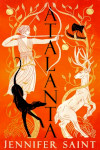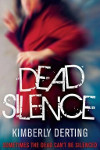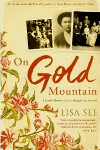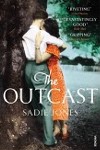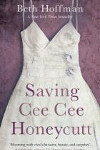Kimberly Derting – Desires Of The Dead
Posted 17th March 2011
Category: Reviews Genres: 2010s, Paranormal, Romance, Thriller
2 Comments

This time it may hit closer to home.
Publisher: Headline
Pages: 355
Type: Fiction
Age: Young Adult
ISBN: 978-0-7553-7896-8
First Published: 15th February 2011
Date Reviewed: 23rd February 2011
Rating: 4/5
Violet knew that ringing 911 when she felt the echo of a body in the shipyard was a risk she had to take. When Sara Priest, an ex-FBI agent contacts her, she realises that it was a mistake to have let the police know something that nobody should. Now she must decide whether to take Sara up on her offer, and to reveal her ability. But there is something else on Violet’s mind. What’s the deal with this new guy, Mike, and his sister?
Desires Of The Dead is the worthy follow-up to last year’s, The Body Finder. In it, Derting packs all the same winning qualities that made the first a success, and takes it up a notch on many levels.
The most obvious difference is the inclusion of the FBI. Whereas Violet’s association with her local police is because of her uncle, Sara Priest enters as a third party, a separate entity. Where The Body Finder was literally about working at ground level, Desires Of The Dead deals more with professional interaction and suggests that in future the series will focus more on things that well befit the crime genre.
The book explores the concept of the family and it’s variations – Violet’s family, a metaphorical family, and this time also the family of the person killed. Family is the basic backbone of the book and whereas before the emphasis was on a person’s mental state, this time it is about how you protect those you love.
Violet has to be one of the best YA heroines of recent years. Continually strong and always equal to her boyfriend, it’s a pleasure to read about her. Jay is also wonderful, and I think it’s fair to say that Derting has a way with characters, which makes them very real.
Jay sat down across from Chelsea and took both of her hands in his. The oversized lunchroom was buzzing with activity, and he practically had to yell to be heard.
“Chelsea, for the love of everything good and holy, please… please stop ruining my friend.”
The romance in the book is never idealistic, and when Violet thinks about Jay she never goes overboard. She thinks about him a lot, but there aren’t paragraphs and paragraphs of it. It’s just so natural. And although Jay is fiercely protective of Violet he gives her space when she needs it.
Before, Derting wrote scenes from the enemy’s point of view, and she does this again in Desires Of The Dead. It’s an interesting device. The reader isn’t so much excited to find out who the person is as they are excited to find out how the conclusion is reached. Because you are already acquainted with the enemy, even if you’re not sure who the enemy actually is, you can enjoy the journey to discovery more because there’s no desire that the author hurry up and tell you. Although the need for speed can be exciting, you often miss interesting details in your rush to finish, and so this isn’t an issue here.
The new elements introduced in this book suggest that next time the difference is going to be quite something, and it appears that from standing on the fence between paranormal and totally realistic (because Violet’s ability is actually rather believable in our world where psychic abilities are acknowledged), Derting is going to jump over and explore the fantastical side. Personally I have little doubt that she won’t keep it just as real as before.
Derting and Violet both know that things cannot stay the same, Derting for the progress of a story, and Violet for the help her ability can bring. The awareness of these things together ensures the development of everything and makes the reader receptive of a third book.
Desires Of The Dead speaks up where others stay silent and proves that a realistic paranormal is possible. The dead have staked a claim on Violet but there’s no reason why you shouldn’t too.
I received this book for review from Headline publishers.
Related Books
Katharine A Russell – Deed So
Posted 11th March 2011
Category: Reviews Genres: 2010s, Domestic, Historical, Social
2 Comments

Over the tip of the iceberg but not yet on the ground of the other side…
Publisher: (self-published)
Pages: 428
Type: Fiction
Age: Young Adult
ISBN: 978-1-4537-7503-5
First Published: 2010
Date Reviewed: 8th March 2011
Rating: 3.5/5
In Haddie’s town in Maryland, America, it’s the 1960’s and African Americans are now able to live lives more equal to their European neighbours. But there is still segregation and there are low opinions of the people still called “Negroes”. It is this conflict between equality and low opinion that leads the death of an African American boy to create a furore. The town may be able to get over it but this issue isn’t their “only” problem.
I have to admit that I was skeptical when I received Deed So because discovering it was self-published and then reading the blurb that heralded it as “astonishing” and “gorgeously written” didn’t bode well in my mind. For a while I did indeed have reason to keep comparing the content to what the blurb declared true.
Unfortunately there are a mass of typing errors in the book, including a few which change the meaning of what’s written and thus have to be pondered over. The majority of the book walks along seeming to not go anywhere – although there are subplots they are wrapped up quickly enough and one can wonder where the book is truly heading. The climax is too convenient, the story gets to a point where it’s racing along like nobody’s business and the event is a good length, and then suddenly it ends in a very unsatisfactory manner.
But there is a lot of good in this book that, by the time you do reach the end, has balanced out the bad. One of these good things is that Deed So is very much one of those works where the reader can live the life through the words. Because the plot takes a long while to show it’s true colours you are able to sit back and really explore life in the 1960’s, which if you’re at all interested in historical domestic situations and were not around at the time, is a real treat. Russell does a good job with the descriptions, speaking personally I began the book not really knowing what made the 1960’s what they were – in other words my knowledge of the distinctions between culture, dress, and technology between the 1930’s and 1960’s is a little blurry – but by the end I could say that I was far more knowledgeable and able to conjure up images, albeit if they weren’t completely perfect.
If the strongest overall aspect is the invitation to the reader to immerse themselves, then so close in prominence that it could be argued just as strong, is the social aspect. On the face of it the major issue covered is directly related to the acceptance of African Americans but in fact the issue is broader than this, encompassing social relations as a whole. Whether due to fact or Russell’s creation (this I do not know) the situation provides a good introduction for further contemplation. The town sits in the middle of the two sides of debate – they have accepted blacks into their community, and talk to them as equals, but there is still some segregation upheld, and the past inequality continues to affect the choices of the community in the way that the whites are higher in society. Because Russell gives the reader this quasi-balance and you get to hear each side of the story every time, you come away much more knowledgeable than you would have if only either segregation or complete equality had been spoken of.
In referring to a broader social issue I look to the problems with class and how the family and community at home related to the return of soldiers. One of the subplots involves the complete change a boy undergoes after having been in Vietnam and how he is unable to speak out about it because of the suffocation of an uninformed community and a society unwilling to discuss the issues he has had to face. In addition to this there are also several domestic troubles.
Russell has created a cast of characters bound by family. All her characters belong to families and each family is important in the community and known by all. Yet, whether they acknowledge it or not, every single one of those families have problems of varying natures.
It would be impossible to point to a particular motive Russell may have had to write this book. Like many other writers, no matter whether they use the period to comment on a social or long-term domestic issues, Russell has created a story with her own spin that is thus at once similar yet vastly different. Each story of this nature brings different thoughts to the foreground.
As a reader I feel privileged to be able to have so many viewpoints and opinions in mind on which, if I so chose to do so, would make for a well-debated essay.
Deed So has it’s fair share of technical hitches and could have done with more polish, but it’s safe to say that it’s a pretty decent novel and informer.
I received this book for review from the author thanks to Pump Up Your Book.
Related Books
Ella Drake – Silver Bound
Posted 7th March 2011
Category: Reviews Genres: 2010s, Erotic Romance, Science Fiction, Social, Western
Comments Off on Ella Drake – Silver Bound

Sometimes you might get what you always wanted, but you’ll have to fight for it first.
Publisher: Carina Press (Harlequin)
Pages: 191
Type: Fiction
Age: Adult
ISBN: 978-1-426890-79-6 (only avaliable as an ebook)
First Published: 22nd November 2010
Date Reviewed: 20th February 2011
Rating: 3.5/5
When Jewel attempts to run away from her evil husband, taking their son with her, she’s caught and her memories are wiped. Prepared to become a sexual slave, no one thought that it would be her much-loved ex-boyfriend who would come to claim her as his, the motive being to save her.
This was pushing the boat for me. Even though I didn’t think my venture into Mills & Boon too shabby an experience, it hadn’t been what I thought it would be. I was therefore still lacking in what I’d set out to gain – experience in a genre far removed from what I usually read. The summary of Drake’s Silver Bound found it’s way to me through one of the statuses of the author’s Twitter account, and I knew without a doubt that this was it.
Silver Bound deals with a deprived subject but although Drake uses it for erotic purposes she doesn’t let the storyline sink to such levels as you may imagine. Indeed the space, western, and escape elements are just as important, and it’s obvious that time has been spent just as much on them as the romance.
What Drake does is present the situation but makes it so that the man, Guy, who claims the slave, Jewel, is a lover from her past who regrets their parting and is thus wanting to save her from her predicament. There is actually less sex than you might think because the love Guy has for Jewel does not permit him to use her to his advantage. Guy makes for a very worthy hero.
All that said I can’t really shy away from describing the sex. It’s hot, it’s in a variety of flavours, and it goes back and forth in control depending on Jewel’s recovery of memories at any given time.
Another point of interest is the growth of Jewel, the enslaved woman. Before her enslavement, upon which her memories are wiped, she is a sassy and confident woman despite her horrible situation. After her enslavement, especially when she meets Guy, she begins to regain them so that the story doesn’t remain as much about Guy’s feelings and it becomes a story of two equals. That’s not to say that Jewel’s thoughts are given no time, indeed they are included in all sections of the story.
I couldn’t write about this book and not talk about the mix of living in space and the realm of the cowboy. Silver Bound isn’t so much futuristic as it is fantasy, the people inhabit and use space stations, journey through the universe in “hoppers” and have futuristic technology – but they appear to have lived on their different planets for ever. The western aspect blends into this flawlessly, as Drake explains how the ranchers use the older ways of living – the cowboy ways – to keep their patch of land fresh. Guy can use a technologically advanced weapon, but he’ll just as often bring out the lasso.
The writing is good but there is a sense of the short story in that many times the scene switches suddenly, sometimes it’s very confusing what is happening. The book could have done with a little more development to keep the transitions between sections of the plot smooth.
I can’t say that my comfort zone in romance overall has changed, even if after the third time my boyfriend asked me what I was reading on my phone and the answer came back, sensationalised for maximum effect, “a dirty erotic novel”, he no longer blinked an eye lid, quashed further by my reminder that men have had access to porn for centuries – but having read Silver Bound I feel less daunted by the genre and see that if you choose wisely you don’t have to land yourself with something that is stereotypical or badly written.
Drake drops an original mix into the pot and shows that a combination of genres at opposite ends of the scale can be blended to good effect, even when the least of details in the blend is examined. The universe created could support a vast number of interesting stories of many types – and as a small slice from this massive universe, Silver Bound does not disappoint.
Related Books
J R R Tolkien – The Fellowship Of The Ring
Posted 4th March 2011
Category: Reviews Genres: 1950s, Fantasy, Spiritual
Comments Off on J R R Tolkien – The Fellowship Of The Ring

An unlikely group of people make the initial journey to destroy a ring that holds an evil power.
Publisher: Harper Collins
Pages: 398
Type: Fiction
Age: Adult
ISBN: 0-00-712970-X
First Published: 1954
Date Reviewed: 27th October 2010
Rating: 2/5
Bilbo Baggins wants to leave his home and he entrusts the ring he stole from Gollum (chronicled in The Hobbit) to his nephew Frodo. The wizard Gandalf tells Frodo that he must take it away, so that it won’t reach the hands of the dark lord who is back to claim it. And so Frodo goes, picking up travellers along the way, on the first stage of a perilous journey.
You can probably tell by the way I wrote the summary that I really did not enjoy this book. I would like to say it was because my copy was 398 pages of tiny print, but it wasn’t only that. I found it incredibly hard to concentrate on the text most of the time, and actually, because I was trying so hard to give it a good go, I didn’t realise what the real problem was until I reached the end.
Tolkien doesn’t adhere to one of the biggest rules – he tells rather than shows. So much of the book is filled with superfluous descriptions of often minor details that no one needs to know; and then, once he’s written reams of description, he repeats himself to tell you about the place the characters just left or to tell you about a place that is nearly identical to that which they were in moments ago. Once, as a child, I wrote a meticulous account of every single pothole and electricity unit I passed when on a train journey. I would never consider it worthy of publishing, but perhaps if I’d given it to Tolkien he could have made some money on it for me.
Because to be honest I do wonder about his reasons for such needless description. If my copy hadn’t been so densely printed then the page number would have been double. Did he give himself a word count he really couldn’t reach and thus filled it with waffle?
This leads me to the writing style. Again, I’m afraid, I was disappointed. The writing is rather simple in some ways but it’s tedious, and reads as though no editor was involved. Tolkien applies to his writing the repetitive usage of he/she said. He adds onto it constant depiction that, although in this referenced paragraph is probably meant to apply humour to the scene and illustrate that Frodo was getting annoyed, just makes reading the book annoying:
…said Frodo evasively.
…said Frodo, not liking the reminder.
…said Frodo with his mouth full.
… said Frodo sharply.
The story itself isn’t bad and reminded me of David Edding’s The Belgariad (which was released years later and thus was no doubt inspired by Tolkien), and I think back to how Eddings made a similar story, of a journey fraught with danger, comic and readable.
Certainly The Fellowship Of The Ring improves when the rest of the characters come into the story, because there is more dialogue and less space for description. Tolkien even manages to evoke emotion when he talks of the homeliness of Lothlorien. He includes many different locales and weather, which when looked back on are quite amazing.
But I feel as though I’ve read all three books in the way that it took so long to get through just one. I can’t say I will attempt the other two because quite frankly I think I’d prefer to read Lauren Kate’s Torment, and we know how I felt about Fallen. I read this book because I wanted to have experienced it (the same motive for Pride And Prejudice and Jane Eyre, both I fell in love with).
If Tolkien had pondered a bit more, thought higher of his audience and their intellect, and believed in their imagination, maybe this book would’ve been better.
Related Books
Marghanita Laski – The Victorian Chaise-Longue
Posted 28th February 2011
Category: Reviews Genres: 1950s, Psychological, Social
2 Comments

The definitive caution for any wannabe time traveller.
Publisher: Persephone Books
Pages: 99
Type: Fiction
Age: Adult
ISBN: 978-0-9534780-4-0
First Published: 1953
Date Reviewed: 27th February 2011
Rating: 4.5/5
Melanie is recovering after months of suffering Tuberculosis. She is much better, but when she moves out of the bedroom to sit on the chaise-longue she bought from an antique shop, she wakes up to find herself in the body of a very sick woman in the Victorian times.
The Victorian Chaise-Longue is a rather weird book in the sense that it is confusing and unsettling. It is not really the horror as described when it was first published, but there are some horrific moments in it.
You may come to the table thinking that the book revolves around doctors and medical treatment, I certainly thought that the bad elements would include Melanie being subjected to medical procedures that we have long since abandoned, but Laski makes the issue very simple.
Melanie’s problem is that she doesn’t know why she’s back in time, what the circumstances of the person whose body she inhabits is (except that they are sick), and that she is unable to articulate herself because of the limitations of the body. Melanie is in the body of one Milly Baines, a young woman who of course has no idea of the concept of things we take for granted, for example aeroplanes. Melanie can think about telling the Victorians about aeroplanes but she cannot say the word because it doesn’t exist in the time she is in. The discovery of what Melanie can and cannot do is perhaps the most interesting aspect of the book because it involves many different things, not just speech.
As well as the above-mentioned frustration, Melanie spends a lot of time trying to work out exactly why and how she got to the past. The how may be obvious, but the why is not. In fact because the reader’s knowledge is no more than Melanie’s the frustration crosses over from fiction to reality – part of the genius of this novel is that the reader never has more or less comprehension than the character. The topics covered are relevant today in much the same way as in Melanie’s time – the book was written in the 1950’s and the concepts explored match our own current way of thinking so today’s reader can understand the differences between Melanie’s life and Milly’s perfectly.
One topic I’d like to highlight is spiritual ecstasy, because Laski’s writing on it really got me thinking. Melanie likens the feeling of ecstasy after she has had sex to the feeling one has when in deep prayer. The two situations may be poles apart, but you can see where her theory lies in reference to spiritual feeling. I noted down the following quote:
It is the ecstasy that is to be feared, she said with shuddering assurance, it is a separation and a severance from reality and time, and it is not safe. The only thing that is safe is to feel only a little, hold tight to time, and never let anything sweep you away as I have been swept – and perhaps that is how, only how I can be swept back.
From this quote one can understand not just Melanie’s thoughts but also their progression as she moves from one idea to the next. It would be useful for me to say at this point that prior to the switch Melanie was bubbly and comes across as someone who acts on impulse. Thus one can see just how confused her mind becomes as she begins to question the intimate details of who she is and how it might relate to the switch.
There are other concepts that I haven’t covered because I can’t really tell you everything. Suffice to say that, like Melanie, the reader must dissect every last bit of information available.
The Victorian Chaise-Longue is a brilliant little snippet of writing that will leave you wondering for days. The page count may be small but the legacy is huge. It’s definitely made me think twice about wanting to explore the past first-hand.











